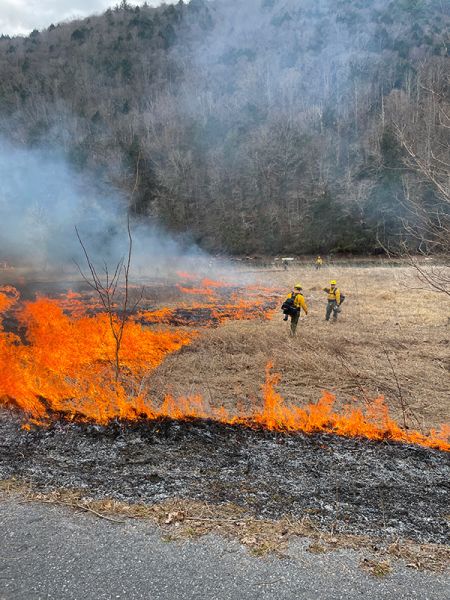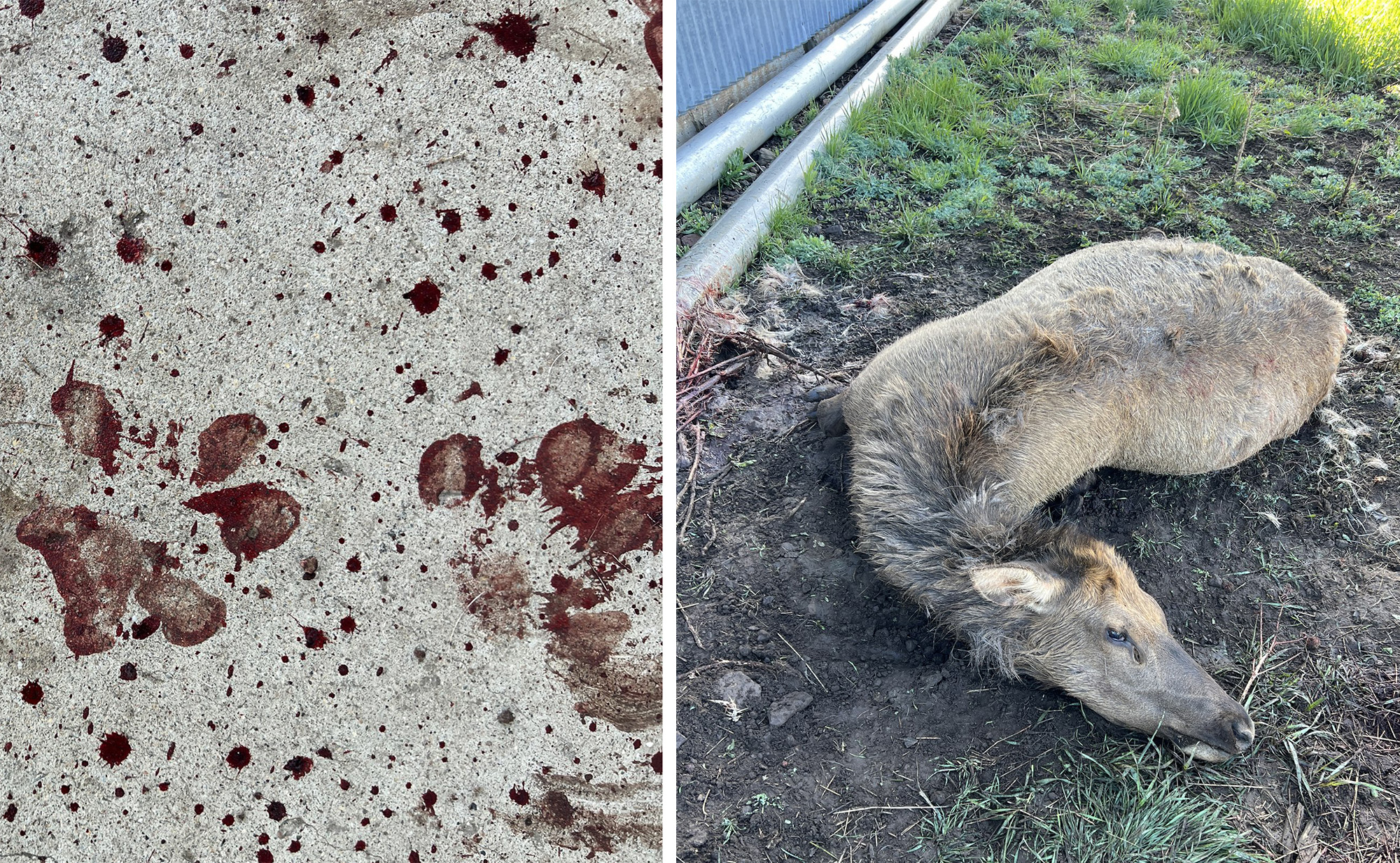EDGEFIELD, S.C. — A team from the Pennsylvania Tiadaghton State Forest recently conducted a prescribed burn to help remove a thatch layer — a dense layer of living and dead stems, leaves and roots — on an ongoing NWTF Pennsylvania Super Fund project. The work is part of an effort to convert a nine-acre section of the Tiadaghton State Forest from a food plot to native warm-season grasses. This is the first conservation project of its kind in the Tiadaghton State Forest.
“The plan is to eventually convert all of our herbaceous openings into a native warm-season grass mix and maintain them with a burn rotation,” said Eric Fritzinger, Tiadaghton fire forester. “The fields are the first to start this transition thanks to funding from the NWTF for the seed.”
The project started with an herbicide application on the site to kill the existing vegetation in August of 2024. The prescribed burning that took place last month removed remaining thatch to expose the soil, and in the coming weeks, crews plan to work with the Pennsylvania Game Commission to use a tractor mounted seed drill to plant the native warm season grass mix seed.
Upon completion, the site will be monitored and maintained with occasional prescribed burns. The project area is included in a burn plan and will be used to train local wildland firefighters in a more controlled setting.
“Prescribed fire is a great tool for maintaining openings in an early successional state and controlling woody species from encroaching into the openings,” said Mitch Blake, NWTF district biologist. “Wild turkeys are often seen using these openings along Pine Creek, especially during the brood-rearing period. Maintaining the openings with fire is a great way to ensure the habitat is available year after year for wild turkeys utilizing the Tiadaghton State Forest.”
This project aims to create native wildlife habitat that can be used by both game and nongame species. The project will also serve as an area for education, since the district has an environmental education specialist that could use the site for field tours. Signs within the area may also be added to explain the project to the public.
“We have received more funding through the NWTF to convert two more of our herbaceous openings in 2025,” Fritzinger said. “Without funding from the NWTF this work would probably not be happening due to our district not having dedicated wildlife habitat funding.”
About the National Wild Turkey Federation
Since 1973, the National Wild Turkey Federation has invested over half a billion dollars into wildlife conservation and has positively impacted over 24 million acres of critical wildlife habitat. The NWTF has also invested over $10 million into wild turkey research to guide the management of the wild turkey population and to ensure sustainable populations into perpetuity. The organization continues to deliver its mission by working across boundaries on a landscape scale through its Four Shared Values: clean and abundant water, healthy forests and wildlife habitat, resilient communities, and robust recreational opportunities. With the help of its dedicated members, partners and staff, the NWTF continues its work to provide Healthy Habitats. and Healthy Harvests. for future generations.
Read the full article here




